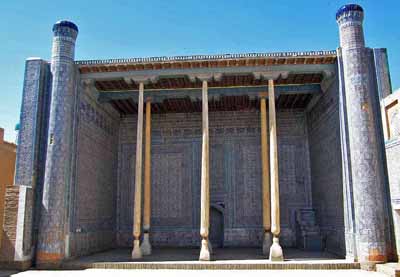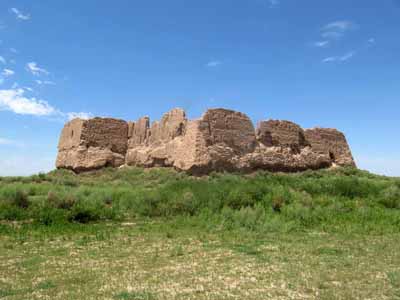Uzbekistan | Khorezm | Khiva | Kunya Ark and Summer Mosque

After visiting the Harem of Allah Kuli Khan I wandered by the Summer Mosque of the Kunya Ark, or Citadel. Finished in 1838, the mosque features spectacular tilework by local masters Ibadullah and Adullah Jin, who had also worked on Allah Kuli Khan’s harem. Summer Mosque Pillars in the Summer Mosque Base of pillar in the Summer Mosque Pillars and Tilework Tilework Tilework Tilework Tilework Minbar, or pulpit, in the corner of the mosque The Kunya Ark, or Citadel, from outside View of the Inner City from the top of the Citadel View the Inner City from the top of the Citadel View from the top of the Citadel, with the Kalta Minaret , top, left-center View from the top of the Citadel with Islam Hoja Minaret (1910), middle Heart-palpitatingly gorgeous local hand-woven carpet. I sat on it for an hour, soaking up the vibes, but in the end did not buy, since the next stop in my wanderings is Bukhara , whose very name is synonymous with carpets. This brother and sister duo dogged my trac

